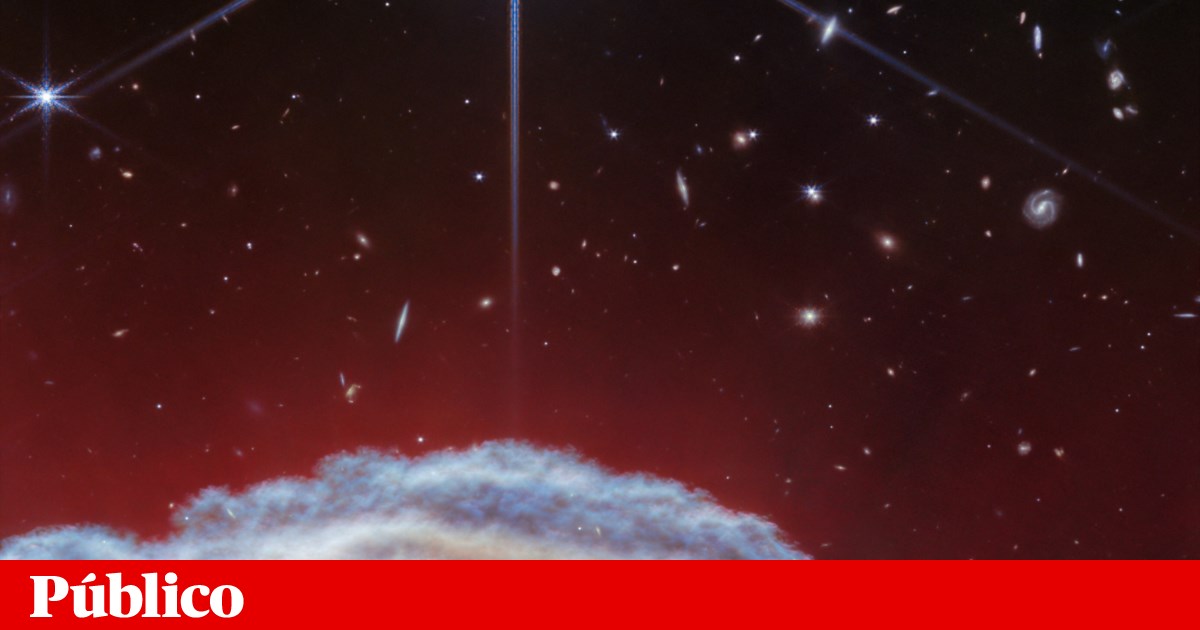The James Webb Space Telescope has captured images of the famous Horsehead Nebula, a cloud of cold gas located about 1,300 light-years from Earth, with an unprecedented level of detail and resolution.
Observations showed part of this nebula in a whole new light, allowing us to capture all its complexity, according to NASA and the European Space Agency (ESA), responsible with the Canadian Space Agency (CSA), for James Webb. Telescope.
Space agencies explained that the Horsehead Nebula, also known as Barnard 33, emerged from turbulent waves of dust and gases and formed from the collapse of an interstellar cloud, explaining that this nebula shines because it is illuminated by a hot star nearby.
It is located in the Orion constellation, about 1,300 light-years away from Earth. The cloud of dark dust and gases that resembles a horse's head makes it one of the most recognizable nebulae.
The gas clouds surrounding this nebula have now dissipated, but the prominent column is made up of clusters thick It is a material that is difficult to corrode. Astronomers estimate that it has about five million years before it disintegrates.
The nebula is located in a region where “photodissociation” occurs, a phenomenon in which ultraviolet light from young, massive stars creates a hot zone of neutral gas and dust among the fully ionized gas, surrounding both the massive stars and the clouds in which they reside. Located.
ESA/NASA/James Webb
These ultraviolet rays greatly affect the chemistry of gases in these areas, and are considered the most important source of heat, according to the same sources. These regions occur where interstellar gas is dense enough to remain neutral, but not dense enough to prevent the penetration of far-UV radiation from very massive stars.
The light emitted by this photodissociation phenomenon constitutes a unique tool for studying the physical and chemical processes that drive the evolution of interstellar matter throughout the universe, from the beginning of star formation to the present.
Due to its proximity and geometric shape, the Horsehead Nebula is an ideal target for astronomers to study the physical structures of these regions and the evolution of the chemical properties of the gas and dust in their environments, as well as the transition regions between them.
According to the space agencies involved in the James Webb Telescope, this is one of the best objects in the sky to study how radiation interacts with interstellar matter.
From now on, the researchers intend to study the spectroscopic data obtained from Capica di Cavallo to prove the evolution of the physical and chemical properties of the substance observed through this nebula.

“Friendly zombie fanatic. Analyst. Coffee buff. Professional music specialist. Communicator.”

